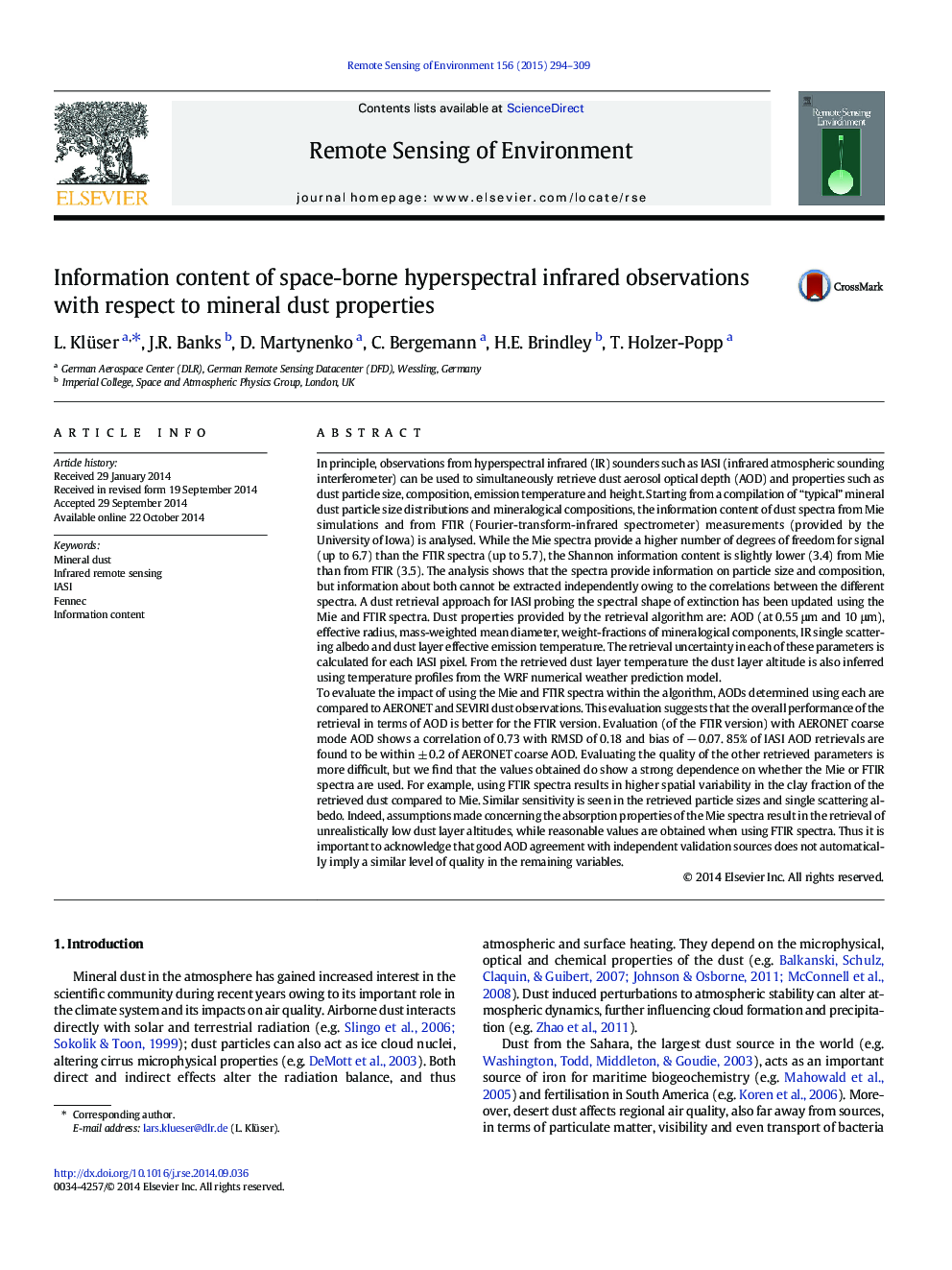| Article ID | Journal | Published Year | Pages | File Type |
|---|---|---|---|---|
| 6346533 | Remote Sensing of Environment | 2015 | 16 Pages |
â¢Analysis of mineral dust composition and particle sizes for IR remote sensingâ¢Information content analysis for dust extinctionâ¢Evaluation of two approaches against each other as well as independent dataâ¢Improvement in dust AOD retrieval compared to previous versions
In principle, observations from hyperspectral infrared (IR) sounders such as IASI (infrared atmospheric sounding interferometer) can be used to simultaneously retrieve dust aerosol optical depth (AOD) and properties such as dust particle size, composition, emission temperature and height. Starting from a compilation of “typical” mineral dust particle size distributions and mineralogical compositions, the information content of dust spectra from Mie simulations and from FTIR (Fourier-transform-infrared spectrometer) measurements (provided by the University of Iowa) is analysed. While the Mie spectra provide a higher number of degrees of freedom for signal (up to 6.7) than the FTIR spectra (up to 5.7), the Shannon information content is slightly lower (3.4) from Mie than from FTIR (3.5). The analysis shows that the spectra provide information on particle size and composition, but information about both cannot be extracted independently owing to the correlations between the different spectra. A dust retrieval approach for IASI probing the spectral shape of extinction has been updated using the Mie and FTIR spectra. Dust properties provided by the retrieval algorithm are: AOD (at 0.55 μm and 10 μm), effective radius, mass-weighted mean diameter, weight-fractions of mineralogical components, IR single scattering albedo and dust layer effective emission temperature. The retrieval uncertainty in each of these parameters is calculated for each IASI pixel. From the retrieved dust layer temperature the dust layer altitude is also inferred using temperature profiles from the WRF numerical weather prediction model.To evaluate the impact of using the Mie and FTIR spectra within the algorithm, AODs determined using each are compared to AERONET and SEVIRI dust observations. This evaluation suggests that the overall performance of the retrieval in terms of AOD is better for the FTIR version. Evaluation (of the FTIR version) with AERONET coarse mode AOD shows a correlation of 0.73 with RMSD of 0.18 and bias of â 0.07. 85% of IASI AOD retrievals are found to be within ± 0.2 of AERONET coarse AOD. Evaluating the quality of the other retrieved parameters is more difficult, but we find that the values obtained do show a strong dependence on whether the Mie or FTIR spectra are used. For example, using FTIR spectra results in higher spatial variability in the clay fraction of the retrieved dust compared to Mie. Similar sensitivity is seen in the retrieved particle sizes and single scattering albedo. Indeed, assumptions made concerning the absorption properties of the Mie spectra result in the retrieval of unrealistically low dust layer altitudes, while reasonable values are obtained when using FTIR spectra. Thus it is important to acknowledge that good AOD agreement with independent validation sources does not automatically imply a similar level of quality in the remaining variables.
